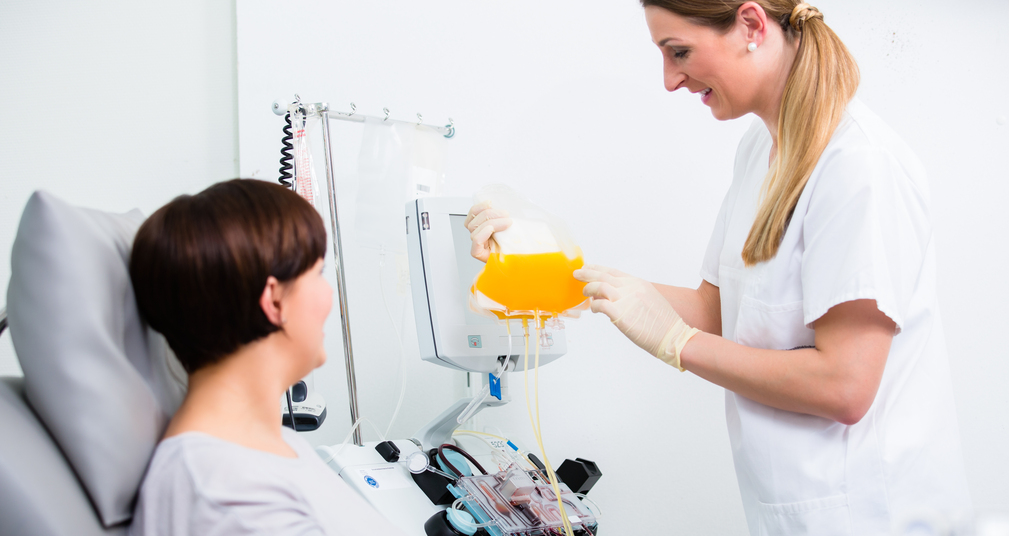Why are Platelet Donations so Important?
If you are a certain blood type, you may be asked to power up to a platelet donation to maximize your impact on patients. Platelets are a blood component that’s always in high demand because cancer patients often need them during chemotherapy treatments.
Platelet donations also help people with blood disorders and may be used during surgeries and organ transplants. About every 15 seconds, a patient in the U.S. needs platelets, which is why platelet donations are important and why Vitalant constantly needs to collect platelet donations.
What Do Platelets Do, Exactly?
Platelets are tiny, delicate cells in our blood that have a big job to do: clot our blood so we don’t bleed too much. Platelets function by constantly circulating in our blood and making repairs we can’t even see. When you get an injury that causes bleeding, they jump into action and converge on the wound to stop the bleeding.
Platelets are important during surgeries to prevent patients from losing too much blood. But what do platelets do for cancer patients? Cancer treatment can destroy the body’s ability to make platelets or lower the platelet count, which makes patients more susceptible to internal bleeding or other complications. Their situation is so precarious, sometimes cancer patients can’t continue their treatment until they receive platelet transfusions.
Who Can Donate Platelets?
The good news is anyone can donate platelets. We recommend that people with blood types A positive, A negative, B positive, B negative, AB positive, AB negative and O positive donate platelets. (We encourage donors with O-negative blood to give whole blood or Power Red, because their red blood cells are compatible with all blood types and are needed for emergency transfusions.)
Platelet donors must meet the same basic eligibility requirements as whole blood donors. Additionally, when you’re preparing to make a platelet donation, we ask you to avoid aspirin and/or aspirin-containing products and other anti-platelet medications 48 hours prior to donation.
We also recommend you increase your intake of fluids, calcium and iron starting two days before your donation appointment in order to enhance your donation experience.
How Long Does it Take to Donate Platelets and How Often Can You Donate Platelets?
Platelet donation takes two to three hours from start to finish (check-in through snack time). You can get comfortable and use the time to read a book, play games on your phone, watch a movie or binge a show on your own devices or watch the TVs in our donation centers. Many donors love the quiet “me time” or compare it to a spa day because they get to relax without interruption.
A special machine collects your platelets and returns your other blood components to you, along with some saline. Because your oxygen-containing red blood cells are returned to you, there is no recovery time, and you should feel as good as new after your donation.
Your body regenerates platelets so quickly you can donate them every seven days, up to 24 times a year. Vitalant has numerous donors who reach milestones of 100+ donations because they frequently donate platelets.
Your Platelet Donations are Constantly Needed
The delicate nature of platelets means they can’t be refrigerated or frozen. They must be transfused within seven days. They are quickly sent out to help hospital patients and the supply must constantly be replenished.
With an estimated 2 million new cancer cases being diagnosed in 2024, and half of all platelet donations going to cancer patients, it’s easy to see why 6,000 units of platelets are needed every day in the U.S.
Come join the ranks of our lifesaving platelet donors by scheduling your donation today!

